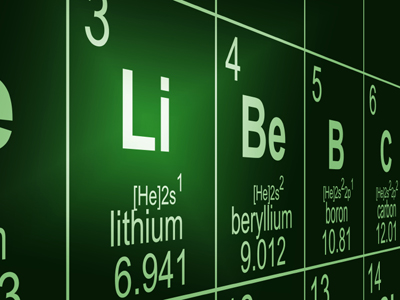By now you will be aware that a good knowledge of the periodic table is essential for high school Chemistry students. This is one of a series of quizzes on the topic and it looks at some of the patterns or trends between elements which can be observed in the periodic table.
Several scientists came up with the idea of the periodic table, but the one thing they all had in common was that they looked for patterns. A full understanding was beyond these people as they had no knowledge of atomic structure. Russian scientist Dimitri Mendeleev was the scientist who finally came up with a periodic table that worked. Like others before him, he arranged the known elements in order of atomic mass, starting a new line after each eight elements, but sometimes he swapped the order of elements and also left gaps, realizing that there were probably other elements to discover. This meant that some of them were 'out of order' in terms of their atomic mass but his table seemed to work.
When the first 'missing' element was discovered, it fitted the pattern that Mendeleev had predicted, which was good evidence that he had been on the right track. When protons were discovered, scientists worked out the atomic number of each element and arranged them in atomic number order. When they did this they discovered that the order of elements corresponded to Mendeleev's table.
Mendeleev's clever insight meant that definite patterns could be seen, patterns that now we take for granted. The biggest pattern is perhaps concerning the original classification of the elements into metals and non-metals by French scientist Antoine de Lavoisier. We can see that the metals appear on the left hand side of the table whilst the much smaller group of non-metals is to the right. Metals all have similar basic properties, for example they conduct heat and electricity, they are malleable and ductile, they are shiny when freshly cut and so on. These properties can easily be explained now that we know the atomic structure - metallic bonding, with its 'sea of delocalised electrons' explains most of them.
All of the scientists who contributed to the development of the periodic table arranged groups of similar elements in vertical columns. You need to know a little about several of these groups, particularly groups 1, 7 and 0. These have 'trivial names' - the alkali metals, the halogens and the noble gasses. The patterns in the periodic table are usually referred to as trends because the patterns are not exact and in some cases, you can't measure them directly e.g. reactivity of the alkali metals with water. Whilst there are some trends that run along the rows, the most important trends are found when you go down the groups.
PLEASE NOTE: There are different ways of numbering the groups of the periodic table. Most UK exam boards still follow the convention that the number of electrons in the outer shell = number of group. If you study chemistry to higher levels, you will find that this is no longer the case other than for groups 1 and 2. We follow the numbering that is currently taught in most UK schools.








